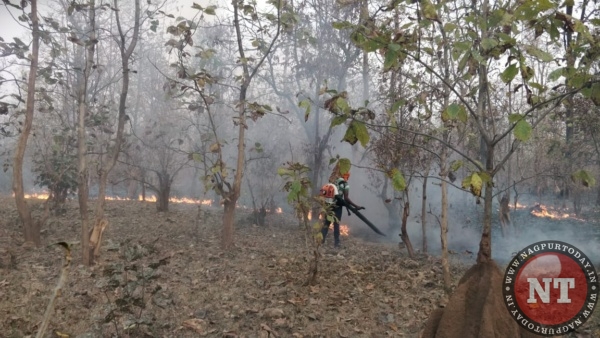Nagpur: At a time when forested areas in Maharashtra witnessing a continuous depletion, the frequent fires in vast swathes of jungles, on the other hand, are causing unimaginable damage to ecosystems. The frequent fire events can reduce soil fertility and carbon storage, negatively affecting even those ecosystems whose regular re-growth depends in part on wildfires. The heavy toll of wildlife the fires take is another worrying aspect of the fiery disasters.
Maharashtra has recorded total of 17,976 incidents of forest fires in the past five years. These fires badly affected around 1.25 lakh hectares of woods. Despite concerted efforts by State vForest Department to safeguard biodiversity in forests by controlling fires, the success seems to have eluding them.
According to statistics released by Forest Department, a total of 5844 small and big fires were recorded in forests of state in 2017 with damage to ecosystem in 31,876 hectares. Interestingly, till March 2018, 3000 fire incidents have been reported in state. From 2013 onwards, the incidents of wildfires are on the increase. In 2013, 2928 fires were reported while 2683 in 2014, 1880 in 2015, and 4641 fire incidents were reported in 2016. In the past five years, the fires have taken heavy toll of jungles in 1,16,692 hectares. The count of biodiversity loss is unimaginable.
While single fires can be rejuvenating for certain fire-adapted ecosystems — low-intensity fires promote biodiversity, renew soil nutrients, and may even be necessary for some plants to produce seeds – the repeated fire events can reduce soil fertility and carbon storage, negatively affecting even those ecosystems whose regular re-growth depends in part on wildfires.
The Additional Principal Chief Conservator of Forests R S Yadav said that the incidents of forest fires are on the decline. The figures are being seen as big mainly due to satellite technology. A number of preventive measures are being initiated to control wildfires. Strike force of fire watchers have been formed that keep a hawk eye of wildfires. 11 firefighting units and 1276 fire blowers have been made available. The number of smart phones and vehicles has been increased.
The climate change may be leading to more fires. Some of the sites were protected from wildfires, while others faced a higher number of fires than normal. As climate change creates warmer and drier conditions in fire-prone areas, it will lead to more fires, which leads to more carbon emissions, which leads to more warming, and ultimately more fires.















